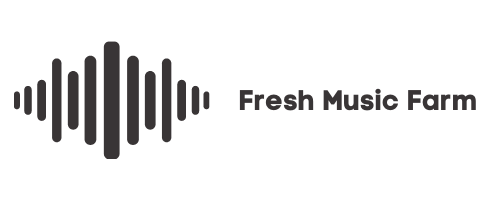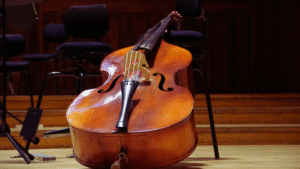Learning to read sheet music opens the door to a world of musical expression and creativity. Many beginners feel overwhelmed by the symbols on the page, but understanding these notations is an accessible skill. By breaking down the fundamentals into manageable steps, anyone can learn to read music effectively.
Sheet music consists of notes and symbols that convey rhythm, pitch, and dynamics. Beginners should familiarize themselves with the treble and bass clefs, as well as the staff and note values. These elements serve as the building blocks for reading sheet music with confidence.
As they progress, beginners can practice with simple melodies to reinforce their skills. Engaging with various pieces will also help them develop a deeper appreciation for music as they learn to interpret the emotions and intentions behind each score. Reading sheet music is not just about following notes; it is about connecting with the music itself.
Understanding Sheet Music Basics
Reading sheet music involves several fundamental concepts that form the backbone of musical notation. Familiarity with these components will enhance comprehension and allow for effective practice and performance.
What is Sheet Music?
Sheet music is a written representation of music using symbols to convey pitch, rhythm, dynamics, and expression. It serves as a critical tool for musicians, allowing them to perform a piece as intended by the composer. Each symbol in sheet music has a specific meaning, providing instructions on how the music should be played.
Musical notation varies across different cultures and genres, but sheet music remains a universal language. It provides musicians with a clear guide, detailing everything from melody to harmony. Understanding sheet music is essential for both performing and composing music.
The Staff and Clefs
The staff is a set of five horizontal lines and four spaces that provide a framework for musical notation. Notes are placed on the lines and in the spaces to indicate pitch. The clef symbol, located at the beginning of the staff, determines the staff’s pitch range and the identity of each line and space.
The treble clef, often called the G clef, is commonly used for higher instruments and voices. It designates the second line of the staff as the note G. In contrast, the bass clef, also known as the F clef, is used for lower-register instruments, marking the fourth line as the note F. Understanding these clefs is crucial for interpreting the music accurately.
Note Names and Note Heads
Notes in sheet music represent specific pitches, and each note has a corresponding name based on its position on the staff. The musical alphabet consists of seven notes: A, B, C, D, E, F, and G. This cycle repeats across different octaves.
Note heads are oval shapes that indicate the pitch. Their position on the staff determines which note they represent. Notes can be filled (solid) or unfilled (hollow), representing different durations. Solid note heads typically indicate quarter notes or longer, while hollow note heads may represent shorter durations like eighth notes.
Ledger Lines and Registers
Ledger lines are extra short lines that extend the staff when the notes are too high or low to be placed on it directly. They allow musicians to read notes that fall outside the standard five lines of the staff, enabling access to both higher and lower registers.
Higher registers refer to notes that are pitched above the staff, while lower registers are those below it. Understanding how ledger lines function is critical for reading complex pieces of music, as they expand the range of notes that can be notated clearly and accurately. Proficiency in using ledger lines enhances a musician’s ability to perform various genres of music.
Essential Elements of Music Notation
Understanding the essential elements of music notation is crucial for reading sheet music. This knowledge forms the foundation for interpreting melodies, rhythms, and various musical notations.
Pitch and Melody
Pitch refers to the highness or lowness of a sound. Notes are placed on a staff, indicating specific pitches. The staff consists of five lines and four spaces, each representing a different musical note.
Melody is created by a sequence of pitches played in succession. Different notes correspond to different sounds. For example, the note C is lower in pitch than D, which follows it on the staff. Recognizing intervals, which are the distances between notes, is also vital for understanding how melodies are constructed.
Sharps, Flats, and Accidentals
Sharps and flats modify the pitch of notes. A sharp, indicated by a ♯ symbol, raises a note by a half step. Conversely, a flat, shown with a ♭ symbol, lowers it by a half step.
Accidentals indicate notes that are altered from their natural state. These changes are temporary and must be read in context. For instance, if a note is sharp in one measure, it remains sharp only for that measure unless otherwise indicated.
Key Signatures and C Major Scale
Key signatures appear at the beginning of a piece of music, indicating the sharps or flats used throughout. Each key signature corresponds to a specific scale, which contains the notes that are primarily used.
For example, the C Major scale includes the notes C, D, E, F, G, A, and B, with no sharps or flats. Understanding key signatures helps musicians identify the tonal center of a piece and the notes that will frequently appear.
Measures and Meter
Measures organize music into manageable sections. Each measure contains a specific number of beats, defined by the time signature. Common time signatures include 4/4, which indicates four beats per measure.
Meter provides the rhythmic structure. It signifies how beats are grouped, influencing the flow of the music. For instance, 3/4 time features three beats per measure, often creating a waltz feel. Recognizing these elements helps musicians maintain the rhythm while reading music.
Reading and Interpreting Rhythms
Understanding rhythm is essential for reading sheet music effectively. It encompasses note values, time signatures, and various rhythmic notations that shape how music is performed.
Note Values and Rests
Note values are fundamental in understanding rhythms. Each type of note represents a specific duration:
- Whole Note: 4 beats
- Half Note: 2 beats
- Quarter Note: 1 beat
- Eighth Note: 0.5 beats
Rests denote silence, and their values correspond to note durations. Common rest includes:
- Whole Rest: 4 beats of silence
- Half Rest: 2 beats of silence
- Quarter Rest: 1 beat of silence
- Eighth Rest: 0.5 beats of silence
Recognizing these values helps musicians maintain rhythm and timing during performance.
Time Signatures and Tempo
Time signatures indicate the number of beats in each measure. They appear at the beginning of a piece, typically as two numbers, such as 4/4 or 3/4. The upper number specifies how many beats are in a measure, while the lower number denotes the note value that represents one beat.
Common Time Signatures:
- 4/4: Four beats per measure (common in many genres)
- 3/4: Three beats per measure (often used in waltzes)
- 6/8: Six beats per measure (often feels like two groups of three)
Tempo refers to the speed of the beat, usually indicated in beats per minute (BPM). Terms like “Allegro” or “Largo” describe the mood and speed of the music.
Dotted Notes, Ties, and Slurs
Dotted notes extend the duration of a note by half of its original value. For example, a dotted half note equals 3 beats (2 + 1). Understanding the use of dots is crucial for interpreting rhythmic nuances.
Ties connect two notes of the same pitch, combining their durations into a single sustained note. This indicates that the player should hold the sound throughout the combined length without rearticulating.
Slurs direct musicians to play the notes smoothly and connectedly, without separate attacks. It’s essential to recognize these markings to perform the piece as intended.
Understanding Rhythm Patterns
Rhythm patterns combine various note values and rests to create a flow in music. Musicians often practice clapping or counting these patterns to internalize their feel.
Common patterns include:
- Straight Patterns: Equal spacing between notes, such as a sequence of quarter notes.
- Syncopated Patterns: Emphasizing off-beats or unexpected rhythms, adding interest.
Recognizing these patterns helps musicians develop a sense of timing and anticipation while performing. Understanding rhythms is key to interpreting and executing music effectively.
Practical Steps to Read Sheet Music
Reading sheet music involves a combination of mnemonic techniques, practical instrument-specific approaches, music theory fundamentals, and community support. These elements help musicians develop a solid understanding of notation and performance.
Mnemonic Devices and Practice Tips
Using mnemonic devices can simplify the learning process. For instance, the lines of the treble clef can be remembered with the phrase “Every Good Boy Does Fine,” corresponding to E, G, B, D, and F. The spaces spell “FACE.”
Practice tips like daily sight-reading can enhance skills. Musicians are encouraged to start with simple pieces, gradually increasing difficulty. Consistency is key. Keeping a practice log helps track progress and areas needing improvement. Additionally, frequent use of flashcards for note identification can reinforce memory.
Reading Music for Piano and Other Instruments
Reading music for piano requires an understanding of the staff, clefs, and key signatures. The piano has 88 keys and utilizes both treble and bass clefs. Notes correspond to specific keys, making visual recognition vital.
For keyboard instruments, recognizing chords is essential. Chords can be played in various positions, influencing a piece’s texture. Practice with simple chord progressions while also trying scales can improve familiarity with the instrument.
Additionally, for instruments like the flute, the notation remains similar, but fingerings differ. Learning the specific fingerings for notes allows for smoother transitions between pieces.
Applying Music Theory
Music theory provides the framework for understanding sheet music. Concepts such as time signatures, scales, and intervals are fundamental. Familiarizing oneself with these concepts enhances the ability to interpret music accurately.
For example, a time signature like 4/4 provides a count of four beats per measure, guiding rhythm. Understanding major and minor scales is crucial for emotional expression, particularly in classical music. Additionally, grasping intervals aids in sight-reading and improvisation.
Applying this theoretical knowledge during practice leads to improved performance and musicianship. Musicians who understand the theory often find it easier to learn new pieces.
Using Forums and Online Resources
Engaging with communities through piano forums expands knowledge and provides support. Platforms like Piano World host large communities of piano lovers, offering discussions on topics ranging from technique to performance.
Forums typically feature statistics on posts, active members, and specific music sheets. This interaction allows for the sharing of tips, experiences, and resources. Online tutorials and videos supplement learning by providing practical demonstrations of concepts previously studied.
Utilizing these resources fosters collaboration and motivation among learners. As members ask questions and share insights, they create an enriching environment that contributes to long-term growth as a musician.



